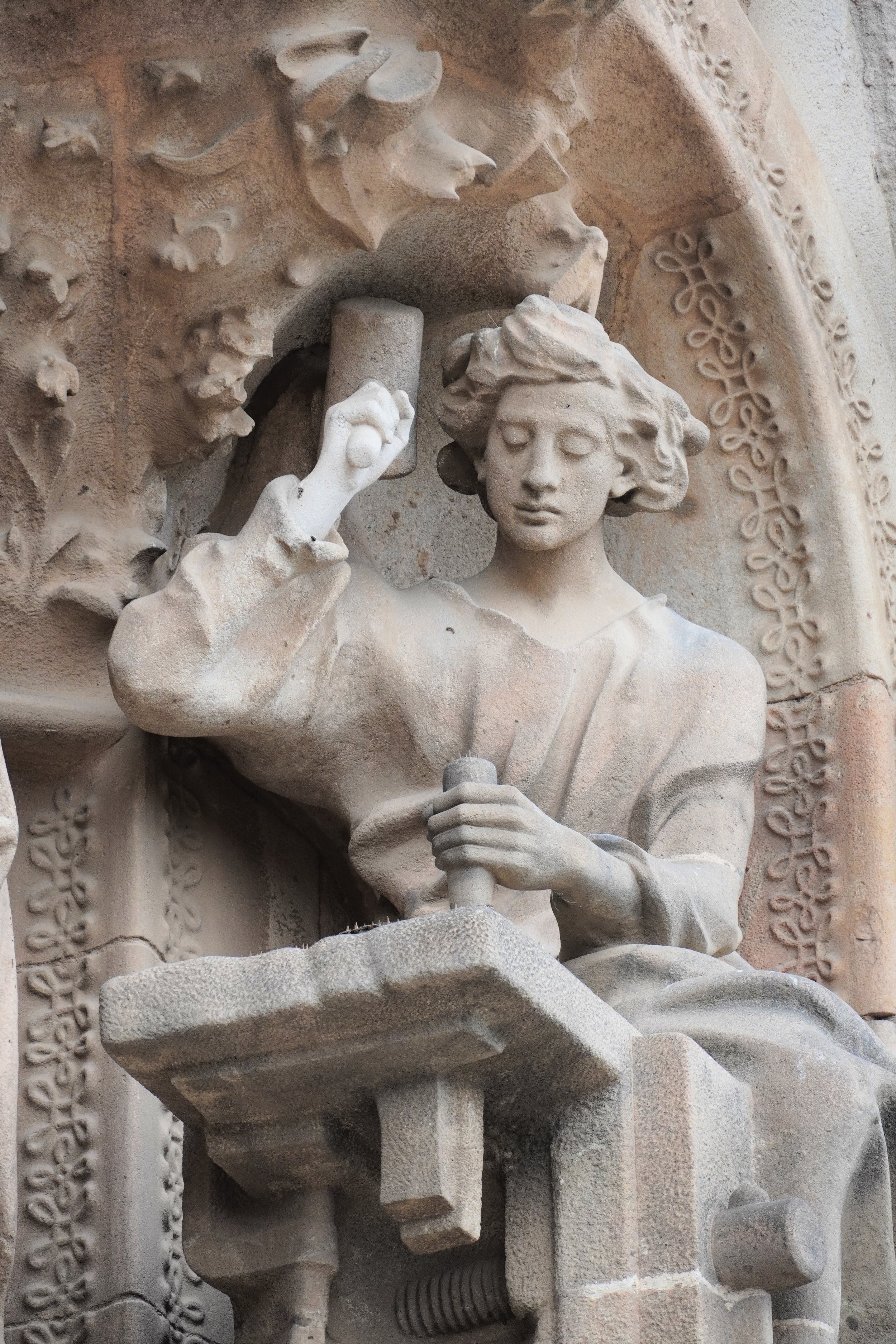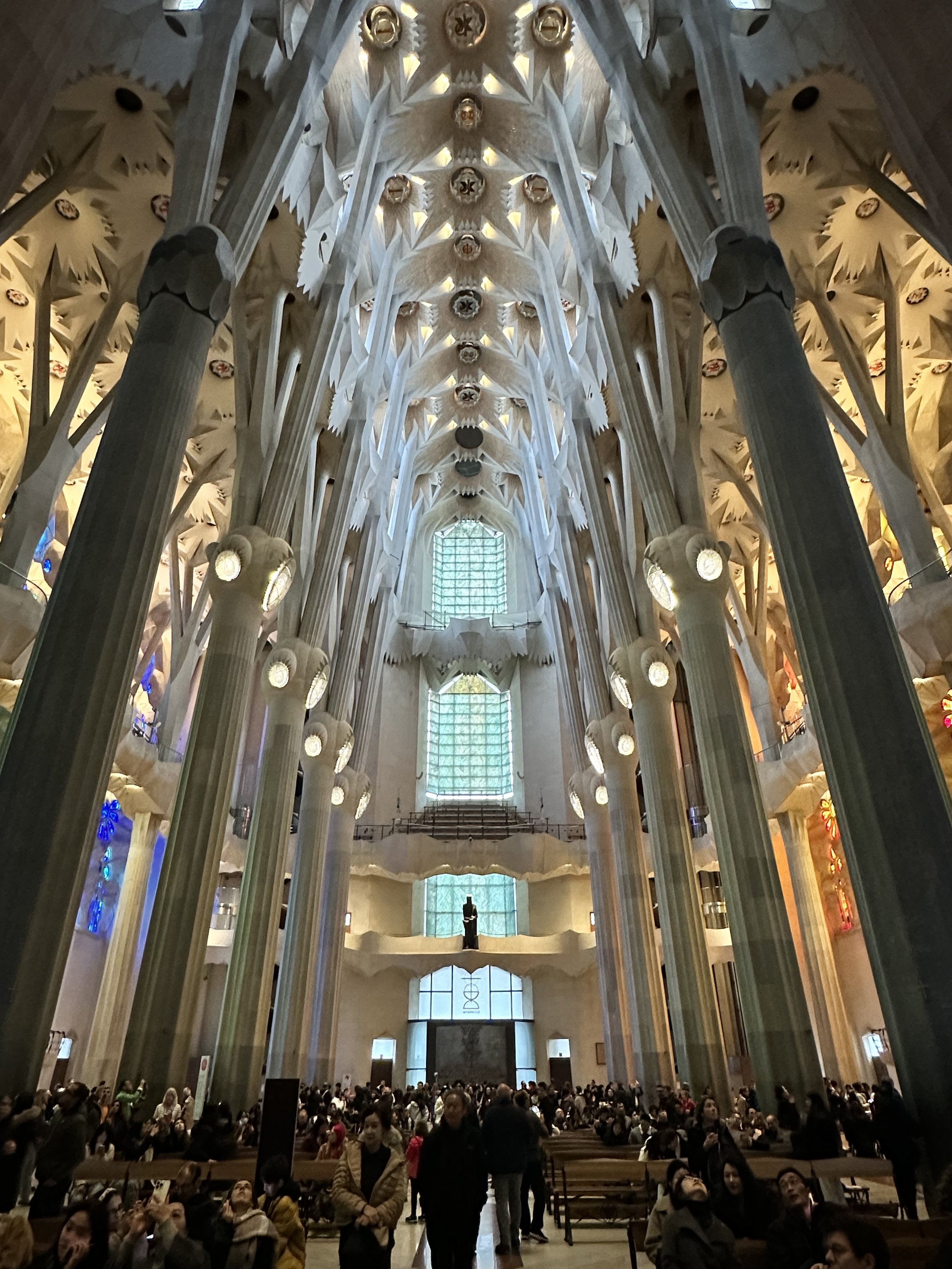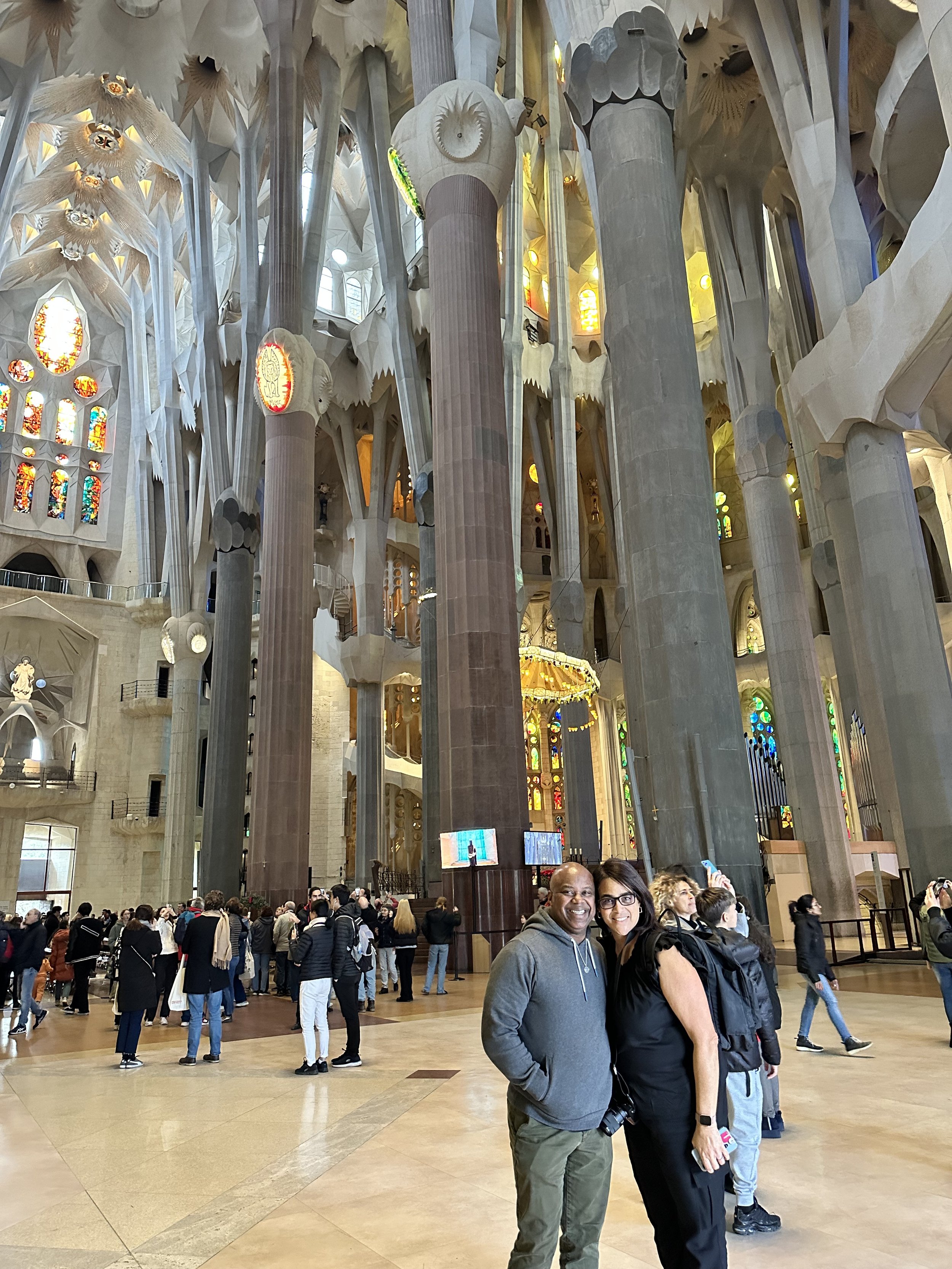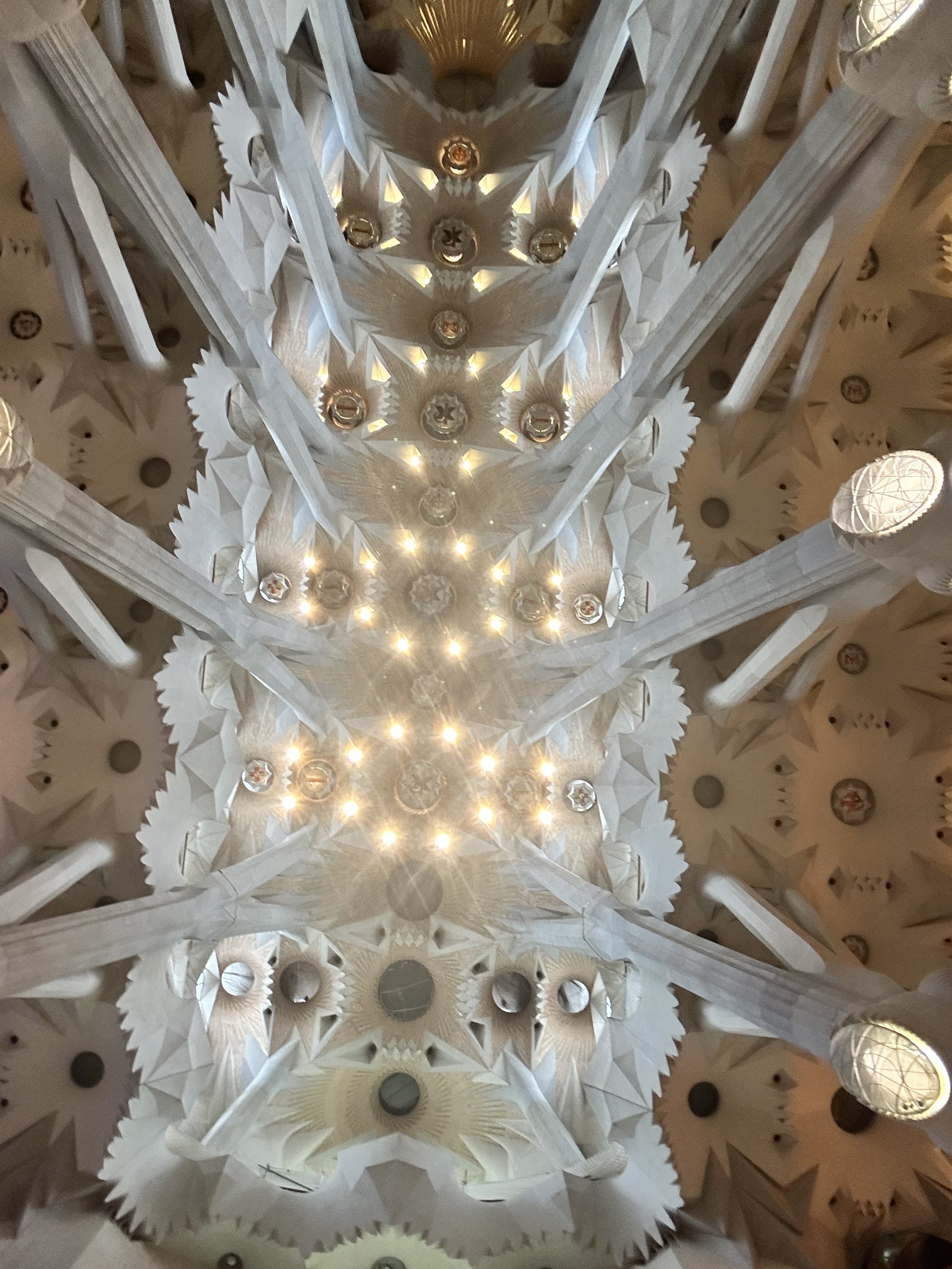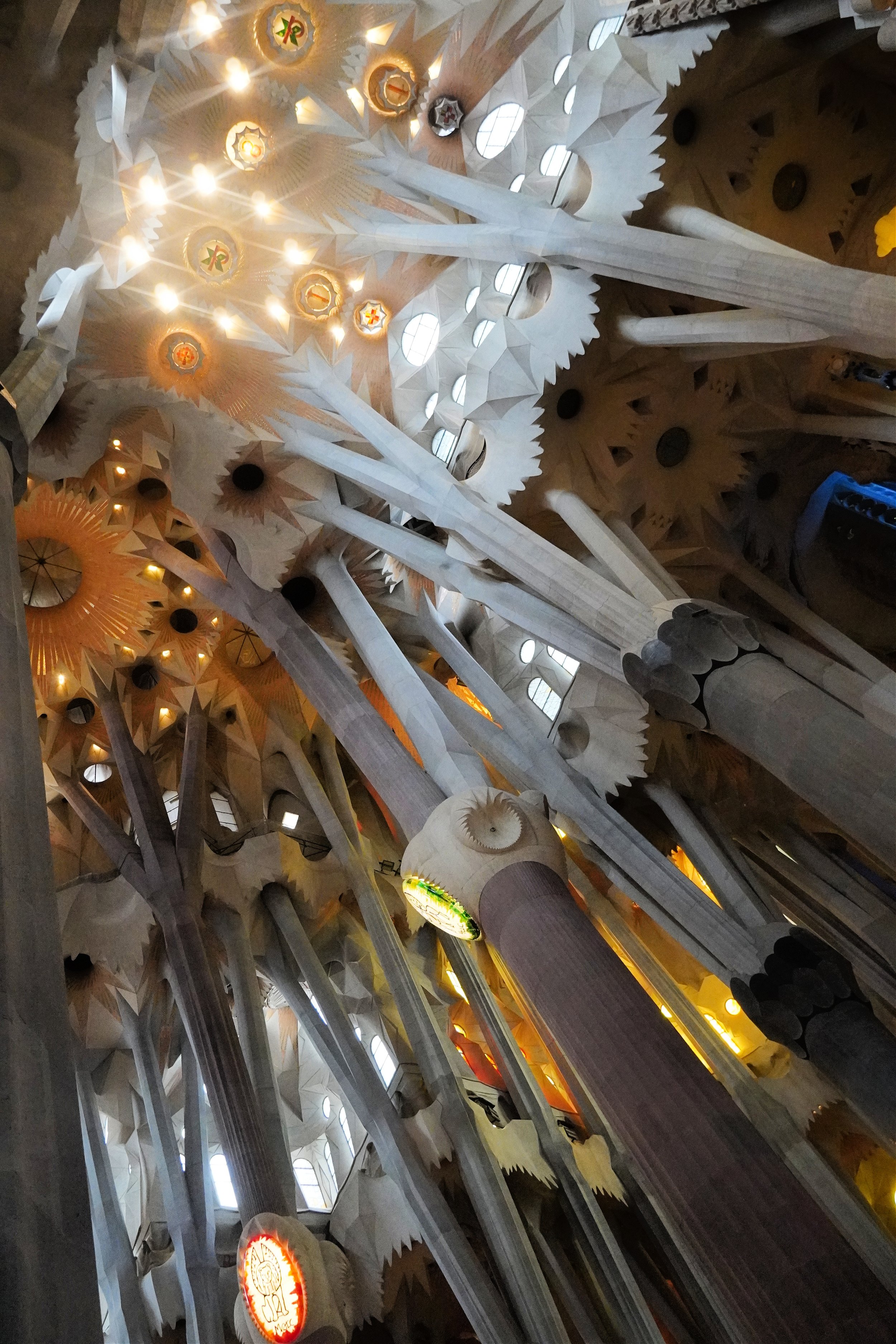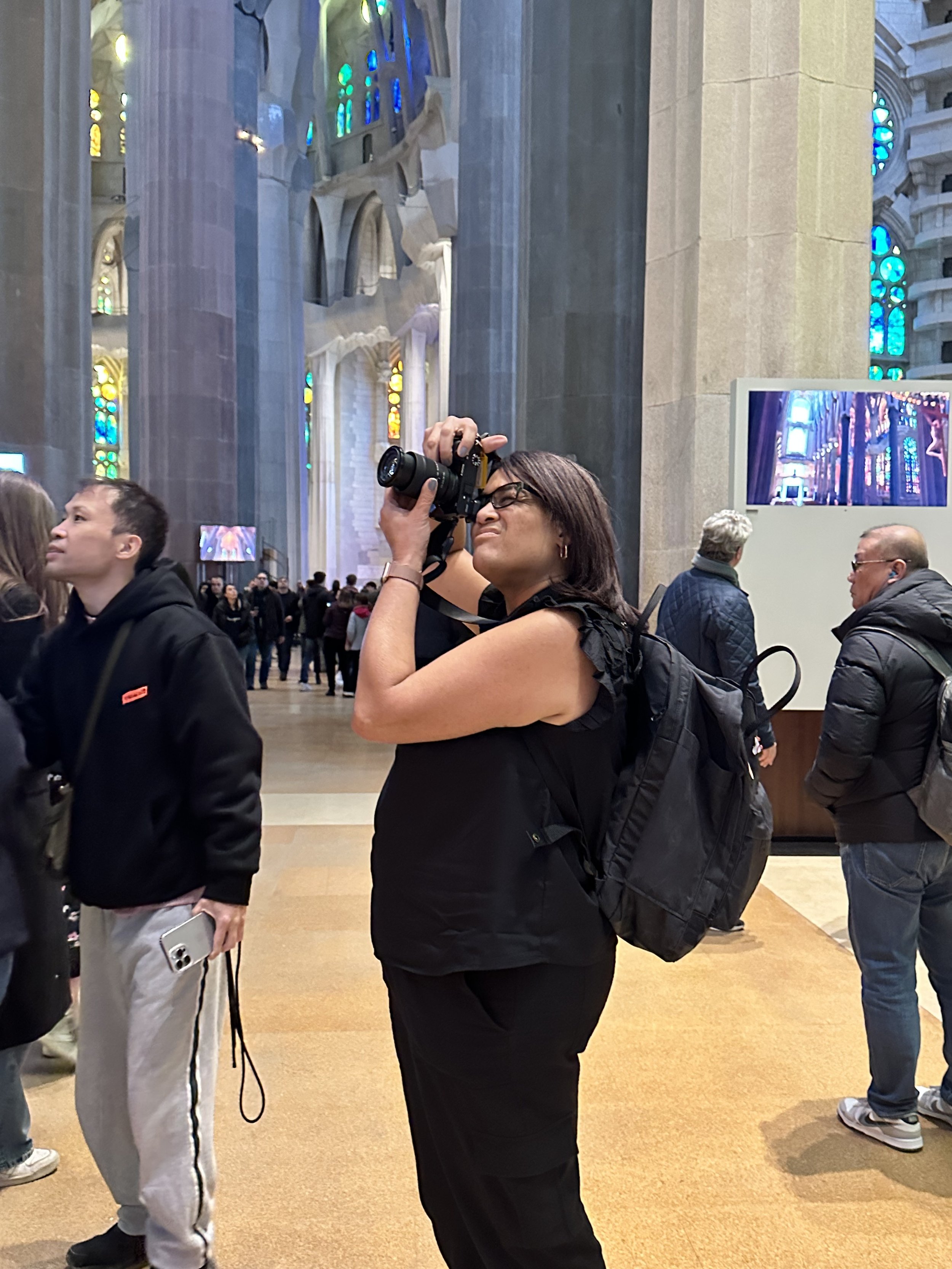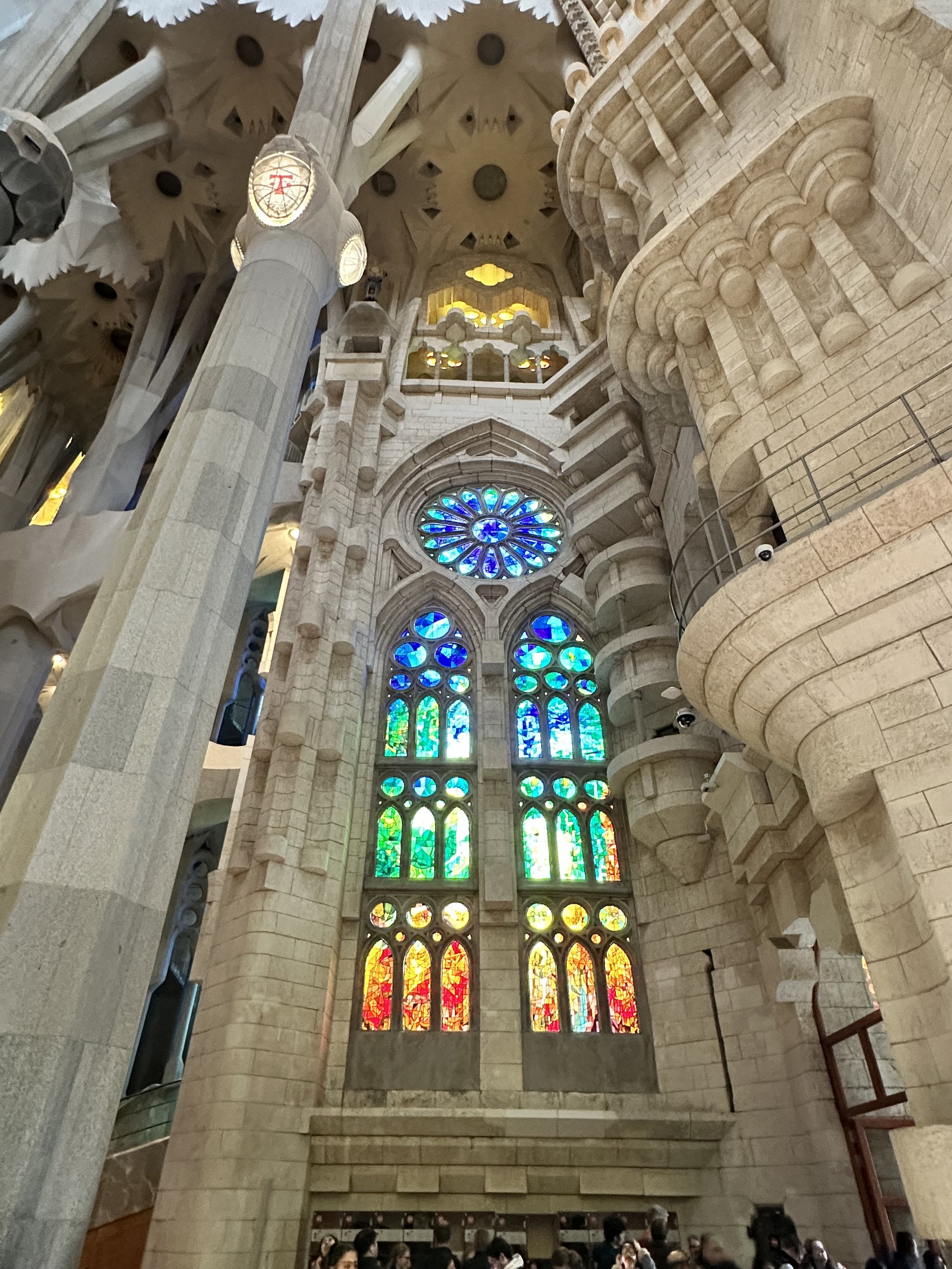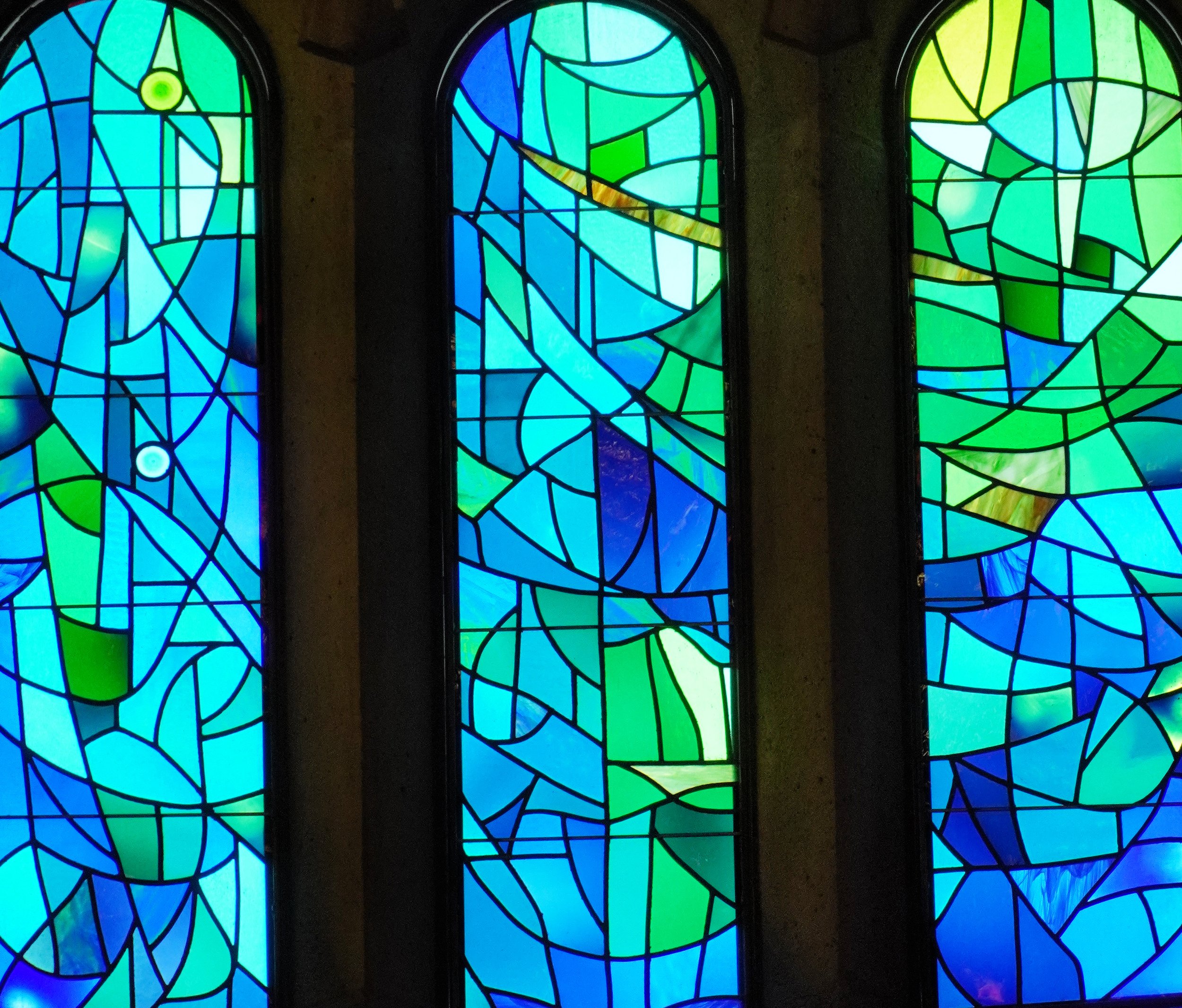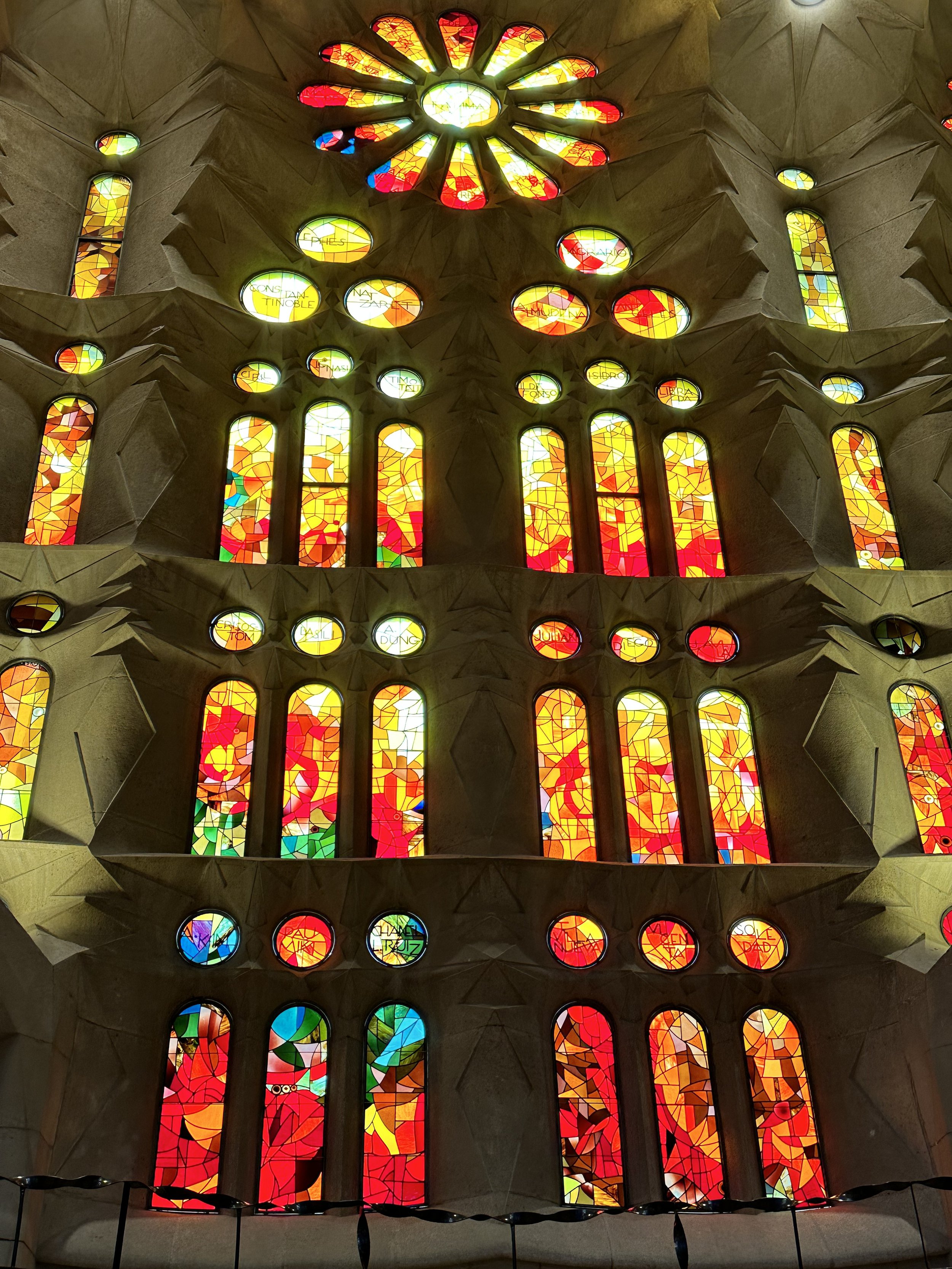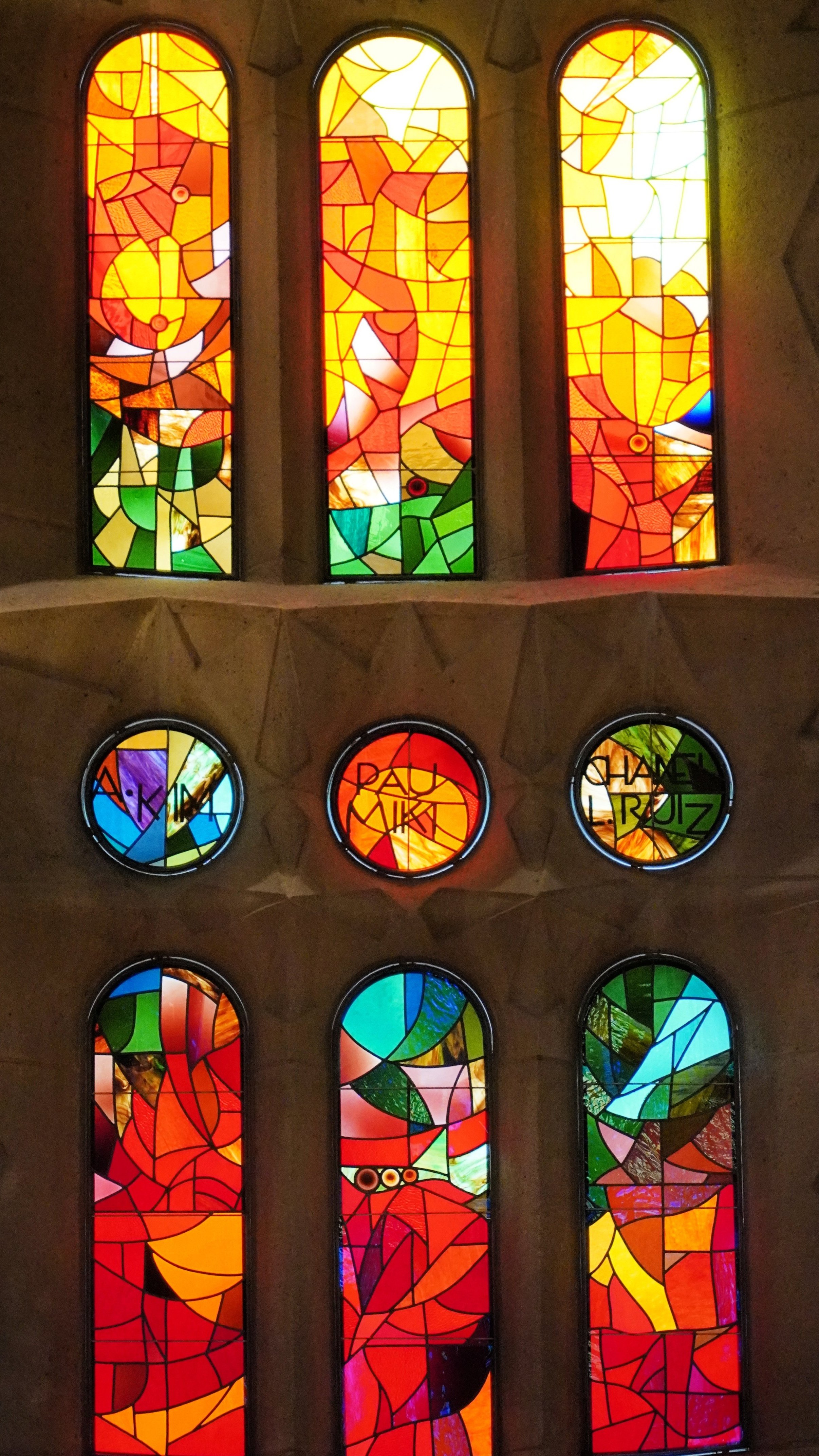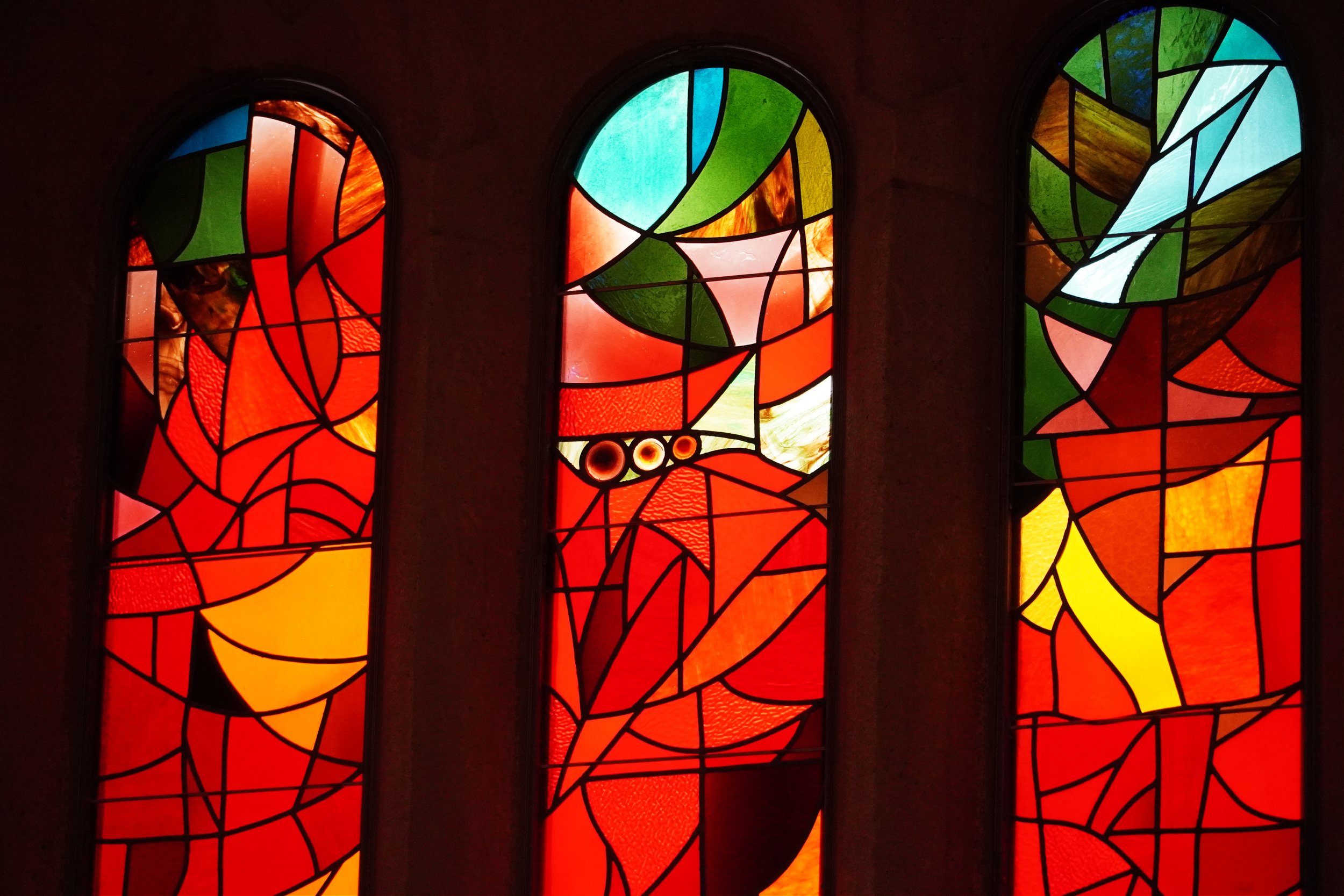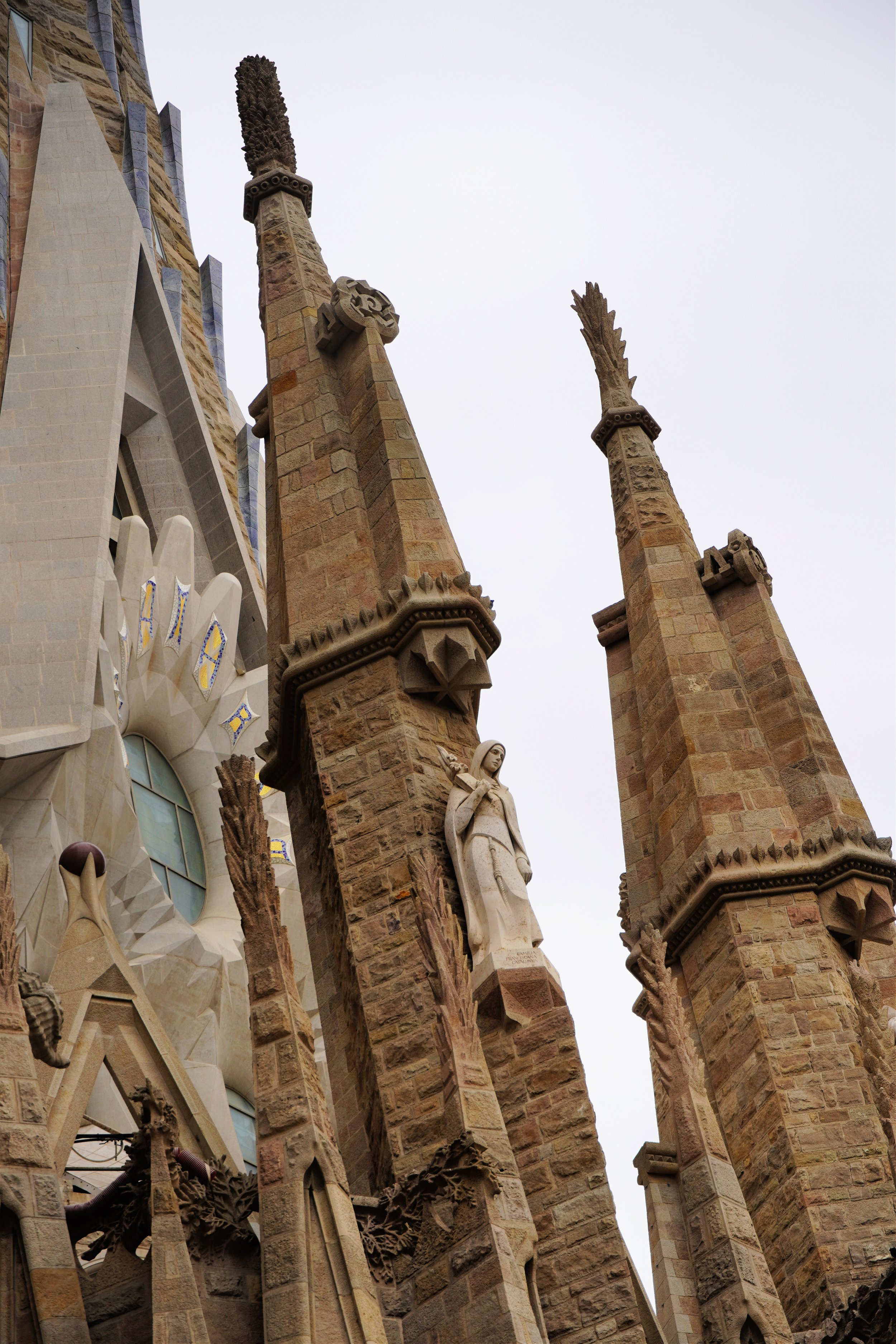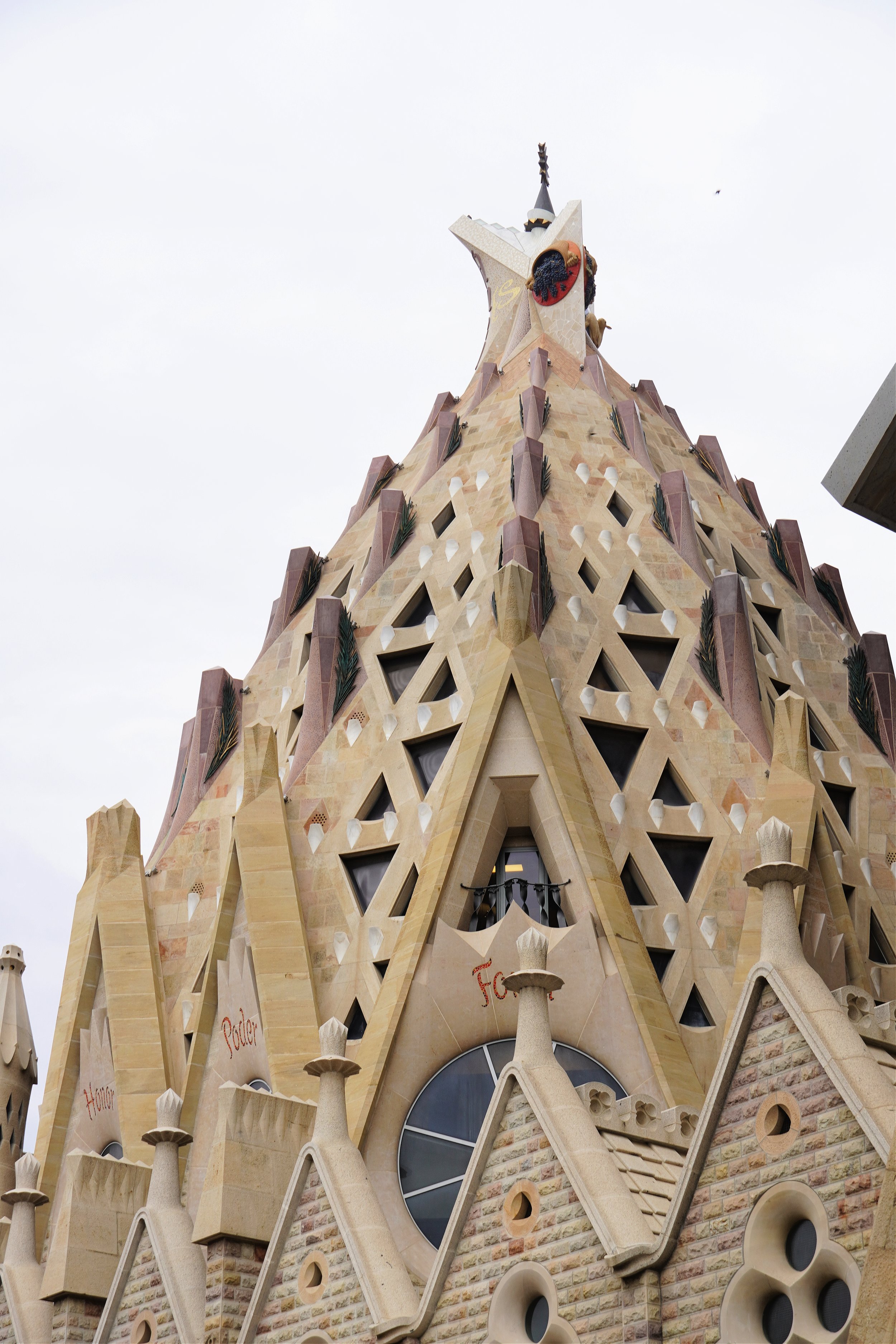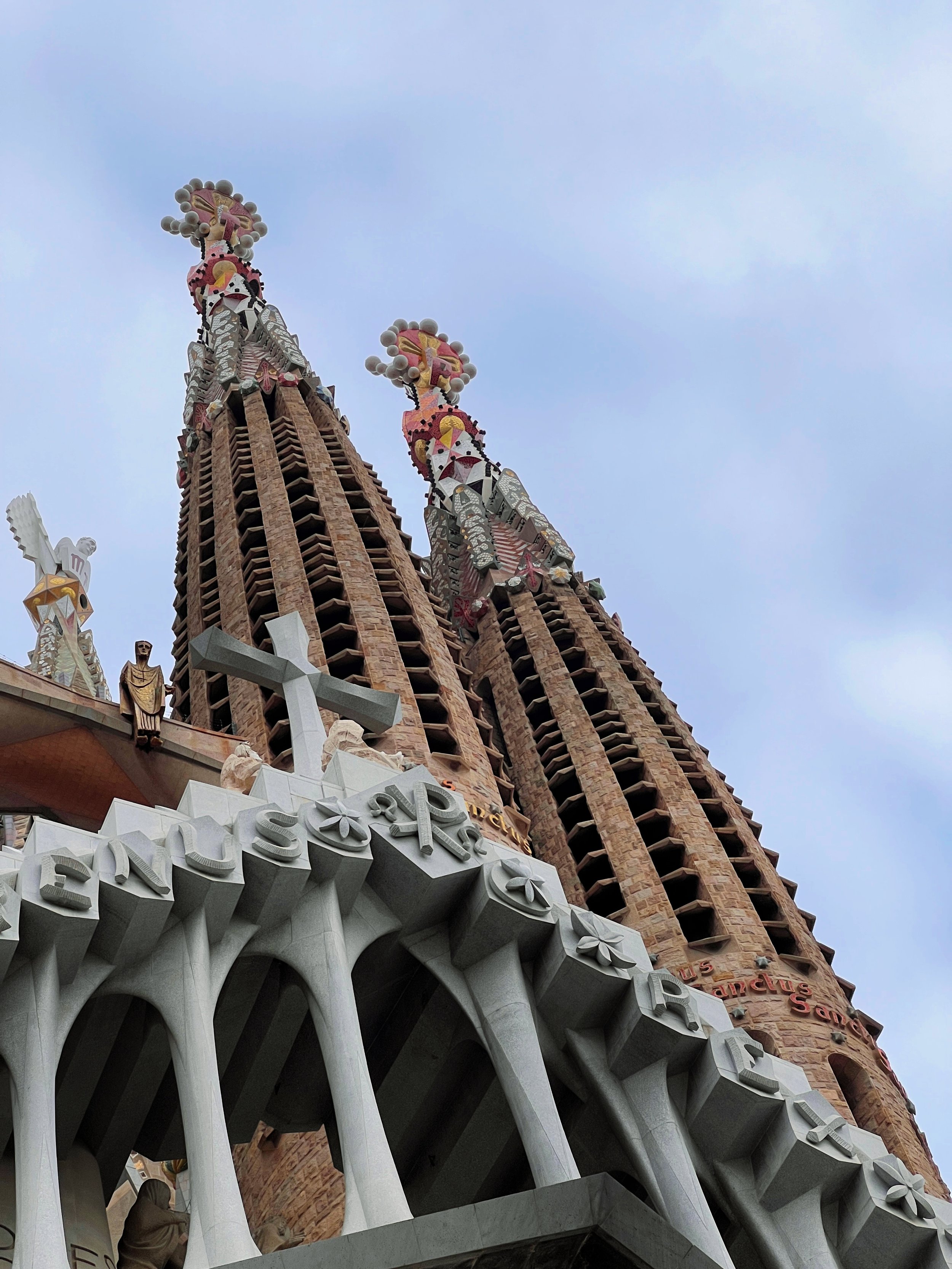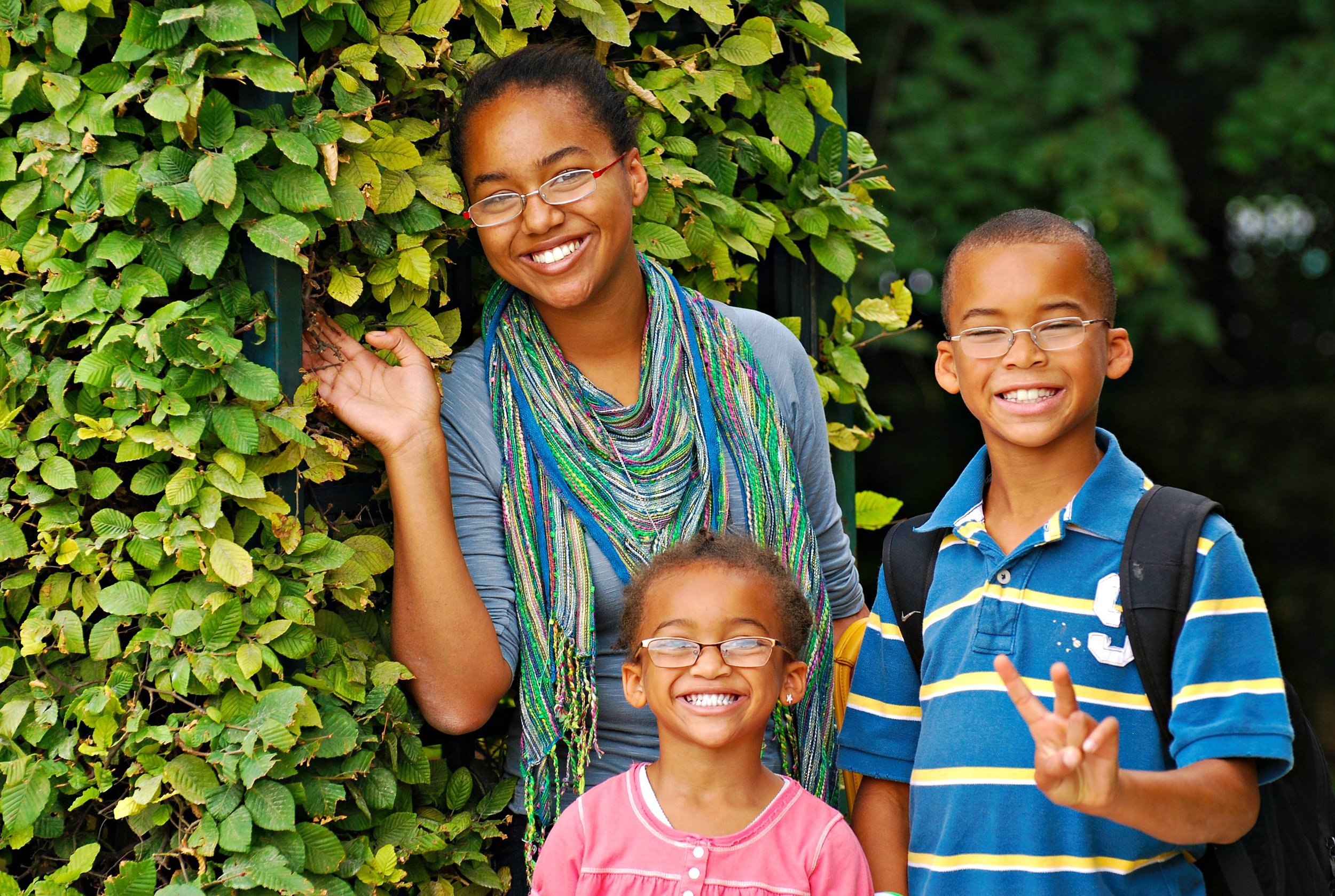The Ultimate Guide to Sagrada Familia: Gaudi's Iconic Creation
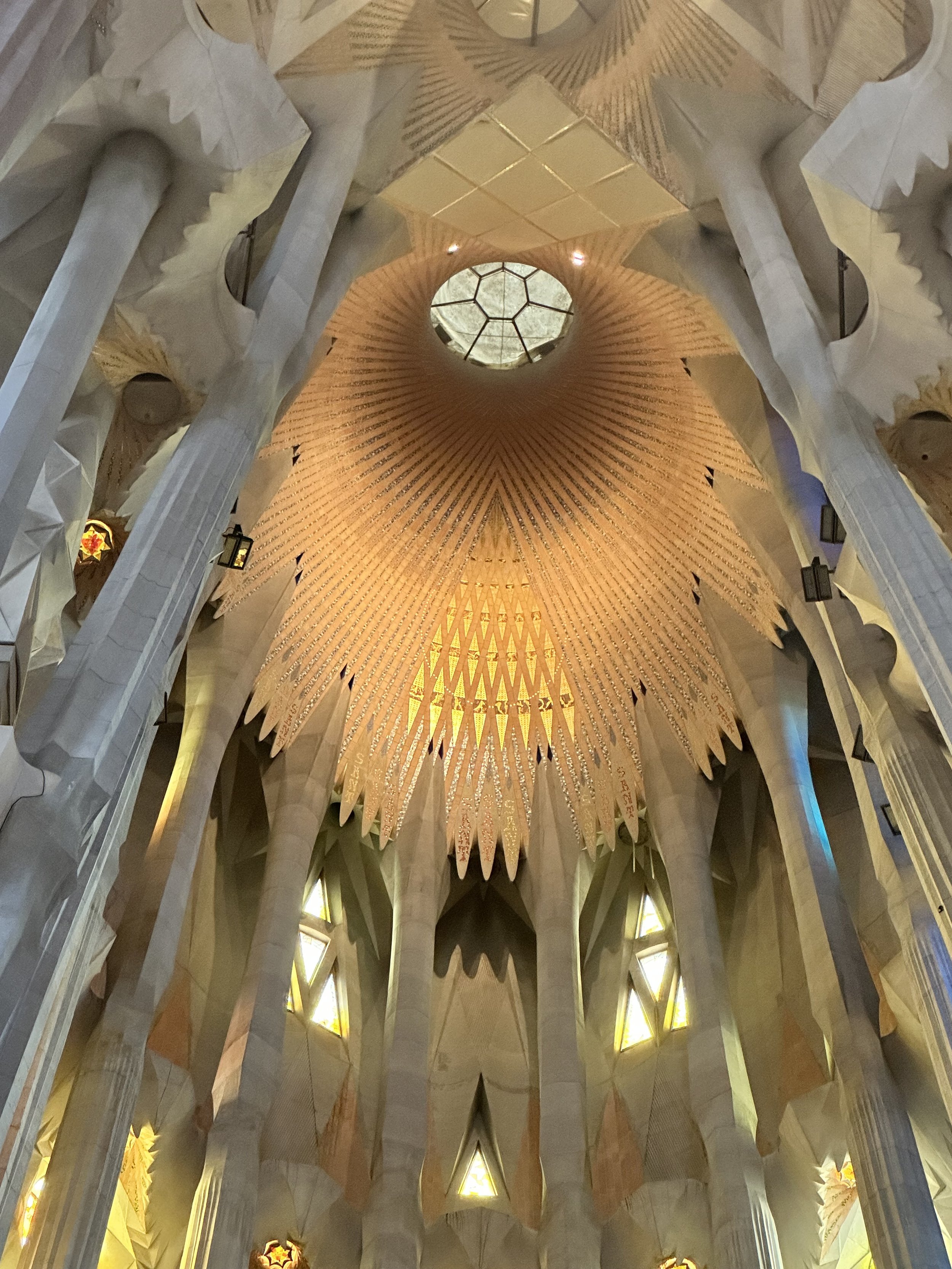
At Barcelona’s city center stands an architectural marvel that has captivated millions of visitors – the Sagrada Familia. This basilica, designed by the visionary architect Antoni Gaudí, has been a work in progress for over a century — it is the epitome of human creativity and ingenuity. As one of the most iconic landmarks in the world, the Sagrada Familia continues to inspire awe and wonder, inviting visitors to explore its intricate details.
Bustling neighborhood surrounding Sagrada Familia.
Getting There:
L2 (violet) or L5 (blue) of the Metro will take you to Sagrada Familia Station, which is located right outside the basilica. Tip: Look behind you as you take the escalator up from the train — with the Sagrada behind you, it’s the perfect opportunity to take a fun selfie!
Approaching the Sagrada Familia, I was immediately struck by the grandeur of its exterior facades - honestly, it can be a bit overwhelming taking it all in. It is easier to ingest the exterior if you remember that it is broken into three sections (or facades). The Nativity facade faces east and is the section that visitors see first. Gaudi created details that represents Jesus birth intertwined with symbols of nature. The Passion facade is on the opposite side (west) and it represents the crucifixion and resurrection of Christ - the architecture on this side seems to be more angular. Finally, there’s the Glory facade. This section is still under construction - when it is complete, it will represent Jesus's glory and ascension into heaven.
Every inch of the Sagrada Familia is covered in Christian symbolism. From the Nativity Facade depicting the birth of Christ to the Passion Facade representing his crucifixion - the basilica exterior tells the story of the Christian faith.
Gaudi’s creative vision continues on the interior of the basilica as well. The first thing you see are the massive columns. They resemble towering tree trunks reaching toward heaven. Look up and you’ll feel as though you are standing under a forest of trees. They’re not only beautiful to look at but also serve as support for the basilica’s structural weight.
There are 36 of these pillars in the basilica — the four pillars in the center represent Matthew, Mark, Luke and John. The remaining pillars represent the twelve apostles.
Beyond their aesthetic beauty, the stained glass windows in the Sagrada Familia serve a deeper purpose. They are a tapestry of symbolism — each window tells a story depicting biblical scenes, religious motifs, and moments from the life of Christ.
The best time to visit Sagrada Familia for photographs is late afternoon and early evening during golden hour. Light floods through the stained glass windows and the basilica glows.
I found all of the symbolism in the Sagrada Familia fascinating (and the forthought that Gaudi had). For example, in the center of the church - at the main altar, hangs the baldachin….. this is the structure that shows Christ on the cross under the umbrella like structure. This canopy is seven sided, representing the seven gifts of the Holy Spirit. Around the rim are golden shafts of wheat - representing bread of the Eucharist and grapes - representing wine of the Eucharist. And, finally the prayer of Glory fills the perimeter of the baldachin
Glory be to the Father, and to the Son, and to the Holy Spirit,
as it was in the beginning, is now, and ever shall be, world without end.
We exited through the Passion Facade, with symbols of Christ’s Crucifixion and Resurrection….. On this side, you’ll note the work is more angular in style with harder edges.
There is a lot to take in at the Sagrada Familia so, plan on at least an hour for your visit (I think we spent an hour and a half) — and realize that you won’t see everything. I’d imagine we’ll visit the basilica again on a return to Barcelona, and I’m sure we’ll see something we missed….. for example, we didn’t make it up to the towers this time —- we’ll do it next time.
Plan ahead, immerse yourself in the symbolism, and extend your adventure to the surrounding areas — consider exploring more of the Gothic Quarter with its cobblestone streets and quaint shops or perhaps, hop back on the subway for a stroll down Passeig de Gràcia.
The Sagrada Familia is a symbol of this beautiful Spanish city and the legacy of Antoni Gaudí. It’s a must-see sight on your next adventure to Barcelona!




